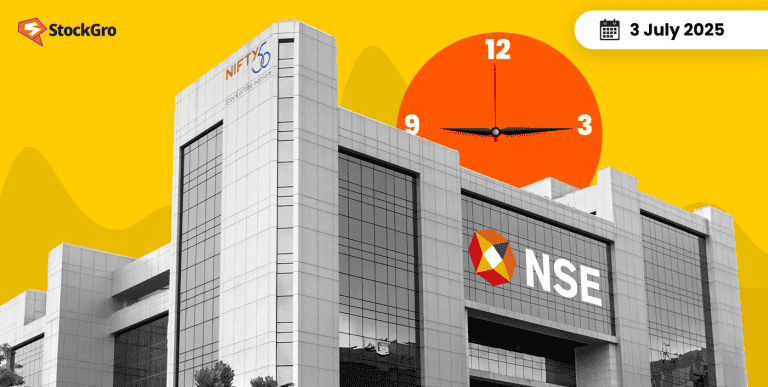
Have a full-time job but also earning from freelance business or a side hustle? That’s good for your income, but it also means your taxes just got a bit more complicated. If you are working alongside your 9-to-5, the income you earn outside your salary is fully taxable.
The truth is, India’s tax system has evolved to accommodate the rise in “mixed-income” earners. But it has its own set of rules and deadlines. Especially with the introduction of the new tax regime (Section 115BAC) now being the default from FY 2024–25, knowing whether to stick with it or switch to the old regime could help you save a chunk in your taxes
If you’re unsure about what taxes to pay for freelance income tax, we will explain everything with this comprehensive guide to help you understand your taxes.
How freelancing income is treated
Under the Indian tax laws, the income you earn from freelancing is classified as “Profits and Gains from Business or Profession.” It’s treated just like any other business income, which means you’re taxed not on the total amount received, but on the net profit after deducting eligible business expenses. This classification also brings additional compliance, such as advance tax payments and selecting the correct ITR form based on how you report your income.
Old vs New tax regime
Starting FY 2024–25, the new tax regime under Section 115BAC is the default for all taxpayers. This means if you don’t specifically opt out, your income will automatically be taxed under this regime. But, if you’re earning business or professional income (like freelancing) and want to go with the old regime, you must file Form 10-IEA before the due date of your freelance income tax return.
The old regime gives you a host of deductions and exemptions. The new regime has lower tax rates but allows only limited deductions. Choosing the right regime depends on specific income mix and eligible deductions.
Read here to know more: Form 10-IE: Choosing New Tax Regime under Income Tax Act
How to calculate the taxable income?
Your salaried income is straightforward, employers usually deduct TDS and issue a Form 16. But your freelance earnings are treated very differently. You have two ways to calculate this:
1. Presumptive taxation under section 44ADA
This is a simpler option, mostly chosen by small to mid-level freelancers. The rules under this scheme are applied:
- If your total gross receipts from freelancing are ₹50 lakh or less (₹75 lakh if 95%+ of payments are digital).
- Applicable to professions like IT consulting, law, medicine, architecture, design, technical consultancy, etc.
- You declare 50% of your total receipts as your taxable income. No need to track or justify actual expenses.
- You are not required to maintain books of account or have your accounts audited.
- Freelancers who opt for presumptive taxation can file through the ITR-4 (Sugam) form.
2. Actual income- Expense accounting
This is more detailed but works better if your freelancing/business expenses are high or your income exceeds the presumptive gross receipt limit of ₹75 lakh if digital, ₹50 lakh if cash exceeds 5%.
Here, you deduct all allowable business expenses from your gross receipts to calculate net profit. Under section 37(1), allowable expenses are those incurred “wholly and exclusively” for the profession. Some of these include:
- Office rent and utilities
- Internet, phone, and software expenses
- Travel and accommodation for work
- Assistant or freelancer payments
- Professional subscriptions or training
This method requires you to maintain books of account, and file your return using ITR-3. If your gross receipt crosses ₹50 lakh, you may even be subject to tax audit under Section 44AB and must furnish Form 3CB/3CD at least one month before the return due date.
Advance tax
Unlike salaried employees, freelancers must take care of advance tax payments themselves. If your total tax liability (after TDS) exceeds ₹10,000 in a financial year, you must pay advance tax in four instalments:
- 15% by June 15
- 45% by September 15
- 75% by December 15
- 100% by March 15
However, if you’re using presumptive taxation under Section 44ADA, you need to pay 100% tax amount by March 15 in a single instalment. Delays or shortfalls attract interest under Sections 234B and 234C so don’t ignore this if you’re filing self employment tax.
GST rules
Freelancers are also subject to GST, but only if the service turnover exceeds ₹20 lakh (₹10 lacs in Special Category States). If your income crosses the limit, GST registration becomes mandatory.
- After registration, freelancers must charge 18% GST on their services and pay freelance income taxes accordingly.
- If you’re working with international clients, the GST is zero-rated, but you must file a Letter of Undertaking (LUT) to avoid paying IGST.
- Even if you fall below the limit, you may voluntarily register, but then you’re expected to comply fully with all GST rules.
Takeaway
It is important to treat your freelance income tax with the same consideration as your salary tax. With the right tax planning and timely filings, you can minimise taxes and avoid penalties, while keeping more of what you earn.
Get more info: Types of ITR Forms in India: Which one should you use?
FAQs
Yes, freelancing income is taxable even if you have a full-time salaried job. You need to report both sources, salary and freelance earnings, while filing your income tax return. While your salary is taxed under “Income from Salary,” your freelance earnings fall under “Profits and Gains from Business or Profession.” This income is taxed after deducting allowable expenses, and you may also need to pay advance tax if your total tax liability exceeds ₹10,000.
Yes, if you have any income from freelancing, business, or profession and wish to be taxed under the old regime, you must submit Form 10-IEA before the ITR filing deadline. If you fail to do so, you will be automatically taxed under the new regime, and you cannot switch later for that financial year.
Yes, freelance income is fully taxable and classified under “Profits and Gains from Business or Profession.” If you earn from both a regular job and freelancing, you must report both incomes while filing your Income Tax Return (ITR). Freelance earnings are treated as business income and may require you to maintain books of accounts or pay advance tax, depending on the amount earned during the financial year.
GST registration becomes mandatory if your total annual service turnover exceeds ₹20 lakh (₹10 lakh in special category states). Once registered, you are required to charge 18% GST on your invoices, maintain proper billing records, and file monthly or quarterly GST returns. Additionally, this GST compliance is separate from your income tax filing, and both must be fulfilled to avoid penalties and pay freelance income tax accordingly.
Yes, if your total tax liability exceeds ₹10,000 after accounting for TDS, you are required to pay advance tax. Freelancers opting for the presumptive taxation scheme (under Section 44ADA) must pay the entire advance tax amount in one installment by March 15. Others, under the regular taxation method, must pay it in four installments across the financial year to avoid interest penalties under Sections 234B and 234C.

